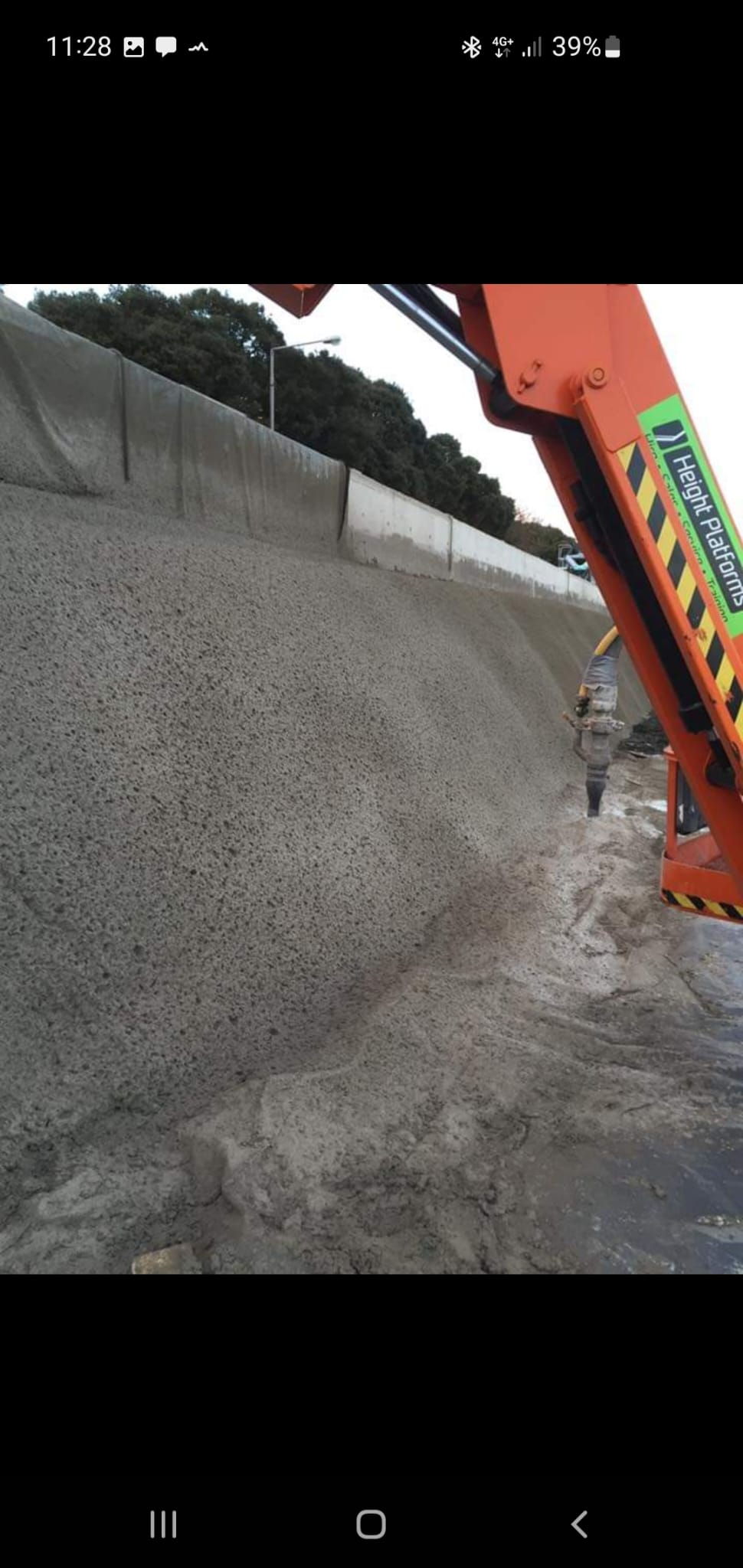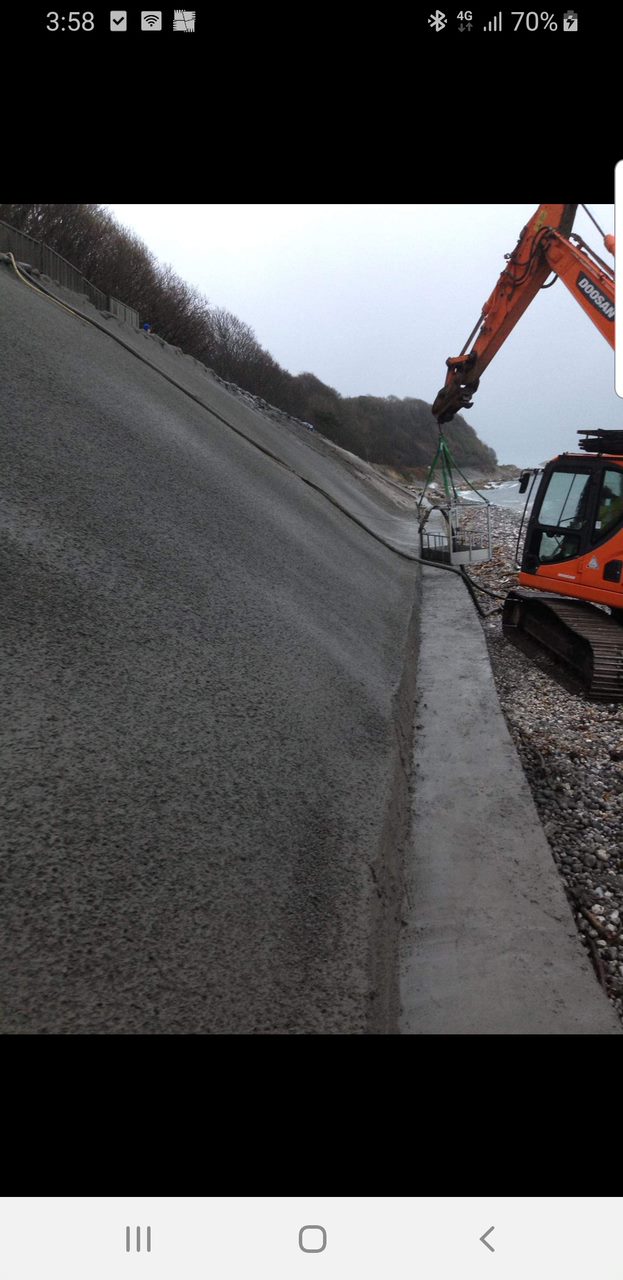This is about Concrete Finishing:
Concrete finishing refers to the process of enhancing the appearance, durability, and overall quality of a concrete surface after it has been poured and initially set. The finishing process is crucial for achieving a smooth, attractive, and functional surface. Here are the key steps involved in concrete finishing:
 Screeding:
Screeding:
Immediately after pouring the concrete, a straightedge tool called a screed is used to level and smooth the surface. This process helps eliminate excess concrete and creates an even, flat plane.
 Floating:
Floating:
Once the surface is screeded, a tool called a float is used to further smooth and compact the concrete. Floating helps bring the cream (finer particles) of the concrete to the surface, improving its appearance and creating a more uniform texture.
 Edging:
Edging:
Edging involves creating a rounded or beveled edge along the perimeter of the concrete surface. This not only enhances the appearance but also helps prevent chipping and promotes water runoff.
 Jointing:
Jointing:
Control joints or expansion joints are created to control cracking caused by shrinkage during the curing process or temperature changes. These joints can be tooled into the surface to provide a neat and deliberate appearance.
 Brooming or Troweling:
Brooming or Troweling:
Depending on the desired finish, a broom or trowel is used to texture the surface. Broom finishes are commonly used for outdoor surfaces like sidewalks and driveways, providing traction. Trowel finishes, achieved with hand or power trowels, create a smoother and more polished appearance, suitable for indoor floors or decorative concrete.
 Curing:
Curing:
After finishing, the concrete needs to be properly cured to achieve its desired strength and durability. Curing involves maintaining adequate moisture and temperature conditions for an extended period, typically through covering the surface with wet burlap, plastic sheeting, or using curing compounds.
 Sealing:
Sealing:
Depending on the application, a sealer may be applied to the cured concrete surface to enhance its resistance to stains, moisture penetration, and abrasion. Sealers can also bring out the color and luster of decorative concrete.
 Polishing (for Decorative Concrete):
Polishing (for Decorative Concrete):
In the case of decorative concrete surfaces, additional steps may include polishing the concrete to achieve a glossy finish. This is often done using progressively finer grits of abrasives to create a smooth and reflective surface.
The specific finishing techniques employed depend on the intended use of the concrete, the desired aesthetics, and the project requirements. Skilled concrete finishers play a crucial role in achieving the desired results, as their expertise ensures a quality finish that meets both functional and aesthetic criteria.

Concrete finishing is a critical step in the construction process, and various issues can arise if it is not done properly. Some common problems that may occur during concrete finishing include:
Issue that can occur when the right skills and experience is not available:
 Premature Finishing:
Premature Finishing:
If finishing is initiated too early, before bleed water has evaporated or before the concrete has set sufficiently, it can lead to a weakened surface, increased susceptibility to scaling, and a compromised finish.
 Under or Overworking the Surface:
Under or Overworking the Surface:
Inconsistent or excessive troweling can result in an uneven surface. Underworking may leave the surface rough and unappealing, while overworking can bring too much water and fines to the surface, causing a weak and dusting finish.
 Lack of Jointing:
Lack of Jointing:
Failure to create proper control joints or expansion joints may result in uncontrolled cracking as the concrete contracts and expands during curing. Joints help control the cracking and promote a more aesthetically pleasing appearance.
 Improper Edging:
Improper Edging:
Incorrect or poorly executed edging can lead to chipping and spalling along the edges of the concrete surface. Properly rounded or beveled edges are essential for both aesthetics and durability.
 Inadequate Curing:
Inadequate Curing:
Insufficient curing can compromise the strength and durability of the concrete. Proper curing is crucial for preventing surface cracking and achieving the desired properties. This includes maintaining adequate moisture and temperature conditions during the curing period.

Finishing concrete in extreme temperatures, high winds, or direct sunlight can lead to problems. Hot and windy conditions can accelerate water evaporation, while cold temperatures can slow down the curing process. These factors may result in surface defects such as crazing, scaling, or cracking.
 Poor Surface Preparation:
Poor Surface Preparation:
Neglecting proper surface preparation, such as cleaning and removing debris, can lead to a weaker bond between the concrete and the finishing materials. This can result in delamination and surface defects.
 Mismatched or Poor-Quality Materials:
Mismatched or Poor-Quality Materials:
Using finishing materials that are not suitable for the specific concrete mix or application can lead to issues. For example, using the wrong type of sealer or applying it incorrectly can result in a compromised finish.
 Inconsistent Color and Texture:
Inconsistent Color and Texture:
If color additives or decorative elements are not mixed evenly or applied consistently, the finished concrete surface may have irregularities in color and texture.
 Inadequate Thickness:
Inadequate Thickness:
If the concrete is not placed to the specified thickness, it may not provide the necessary strength and durability for its intended use.
To prevent these issues, it’s crucial to follow proper construction practices, adhere to project specifications, and ensure that the concrete finishing is performed by skilled and experienced workers. Regular inspection and quality control during the finishing process can help identify and address potential problems before they become more significant issues.

Concrete Finishing Steps
Shotcrete offers several advantages that make it a preferred construction method in various scenarios:
 Screeding
Screeding
Immediately after pouring the concrete, a straightedge tool called a screed is used to level and smooth the surface. This process helps eliminate excess concrete and creates an even, flat plane.
 Edging
Edging
Edging involves creating a rounded or beveled edge along the perimeter of the concrete surface. This not only enhances the appearance but also helps prevent chipping and promotes water runoff.
 Jointing
Jointing
Control joints or expansion joints are created to control cracking caused by shrinkage during the curing process or temperature changes. These joints can be tooled into the surface to provide a neat and deliberate appearance.

Common Problems
Concrete finishing is a critical step in the construction process, and various issues can arise if it is not done properly. Some common problems that may occur during concrete finishing include.
- Premature Finishing
- Under or Overworking the Surface
- Lack of Jointing
- Improper Edging
- Inadequate Curing
